We Expect Low Voltage Systems to Simply Work. It’s Seldom That Simple.
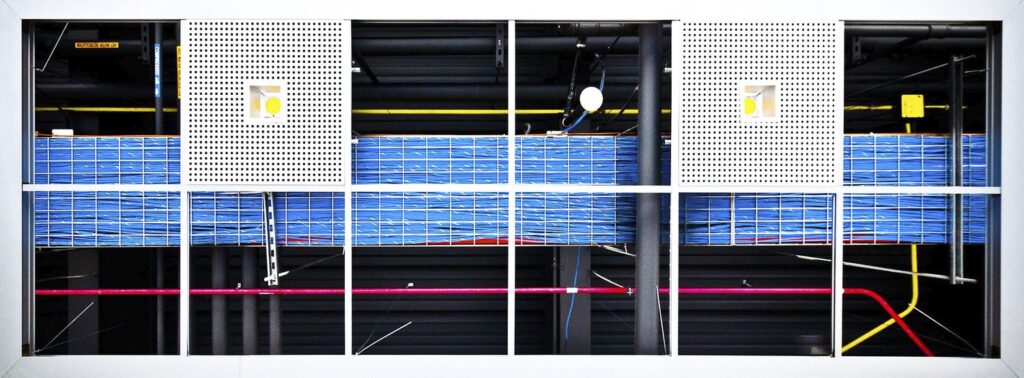
Technology First
Us humans can be an odd sort. On one hand, we race to embrace the newest technologies in our lives. From the latest smartphones and VR consoles to electric vehicles, and Siri. We can’t get our hands on this stuff fast enough.
Yet, when it comes to the technologies in our buildings, we seem far less interested. But why? For a population so captivated with gadgetry and gizmos, you would think being surrounded by data-rich information and vibrant kaleidoscopic images would be paradise. Apparently not, and this needs to change.
When planning your new or renovated buildings, the subject of low voltage systems–the backbone of building technology–needs to occur right away rather than be left behind as an afterthought. Proper advanced planning can ensure your low-voltage systems help you operate at maximum levels of performance. And that’s more important now than ever. Here are the reasons why:
- We Compete with Technology First. From local food carts to global enterprises, technology drives commerce of all types and sizes. Whether it’s solving snarled supply chains, crunching customer data, or managing inventories, low voltage technology = high performance. Be powerful!
- Work Styles Changed Dramatically. Accordingly, it can be a real challenge to maintain team consensus, clarity of purpose, and a culture of connectedness. Once again, robust low-voltage systems can bridge the gap between home and office. Be expedient!
- True Differentiation is Elusive. In an era of commoditization where competing products and services seem virtually identical to customers, technology and its skillful application may be your strongest competitive advantage. From order fulfillment to customer support, low-voltage technology can help ensure your competitive advantage. Be distinctive!
- Time is Still Money. Our ability to harness decision support metrics, then move quickly– and confidently—is critical to profitability and success. Your ability to implement a “Speed-To-Market” strategy can make the difference between seizing success or losing your grip. Commanding low-voltage system designs can make all the difference. Be immediate!
We believe an optimally functioning low-voltage system will be critical to your organization going forward. And that’s the direction you want to go, right?
Make it Work
When we consider low voltage building systems, we take for granted that it’s just “going to work”. Swipe a card, push a button, or tap a touch screen. Simple.
Well, not really. Many existing low voltage building systems were originally designed to enable simple functionalities, but are now overwhelmed by requirements for state-of-the-art data, internet, audio, security/surveillance, and video performance. For example, consider your move from coaxial wires to Cat 5e or 6A data cables. (You did make the move, right?)
Additionally, new buildings often overlook design configurations that accommodate current low-voltage system needs—equipment rooms, telecommunications rooms, or workstation layouts. That is because there exists temptation among building owners not to “surrender” valuable square footage to this mostly invisible technology. If you submit to that temptation, you will likely compromise your organization’s ability to function, let alone succeed. Then begins a costly journey of remediation, reconfiguration, and remodeling. This is completely avoidable.
Intelligent facility designs in new structures can help “future proof” your low voltage systems making them scale-ready for rapid, cost-effective, forward expansion.
Intelligent low-voltage system designs, housed within a purpose-driven facility layout require mindful planning, exacting implementation, and meticulous monitoring of operational performance. But don’t let that intimidate or overwhelm you. Start at the beginning and move forward from there.
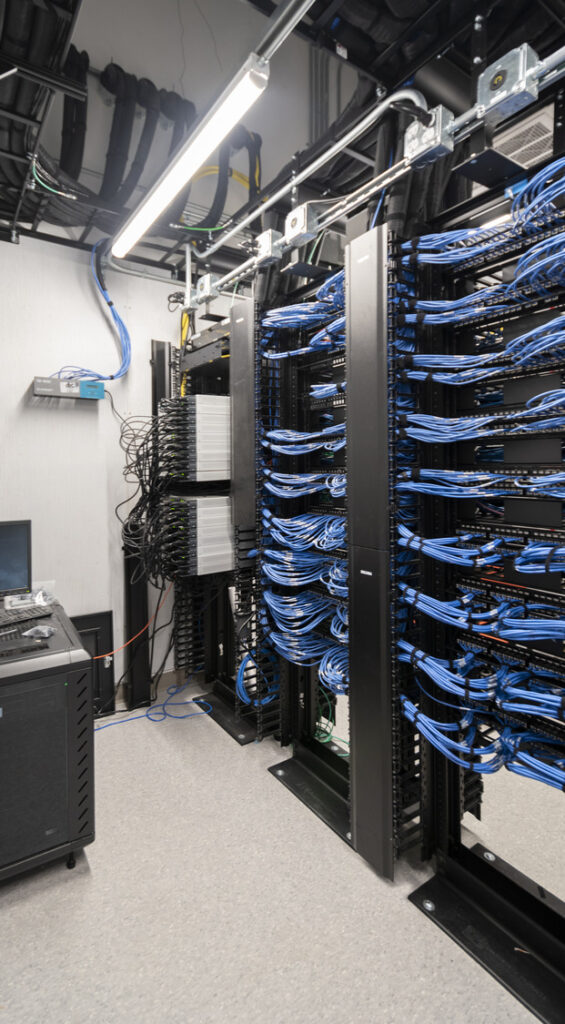
The Process of Integration
At Strang, programming and designing low-voltage systems is a thoroughly integrated process. Our architects, engineers, interior designers, and construction administrators unite with you and move forward in unison.
Our approach, entitled Design Synchronicity®, consists of three comprehensive steps: Listen. Discover. Design. This project management/development system provides us with an outline with which to approach technology integration into our building designs.
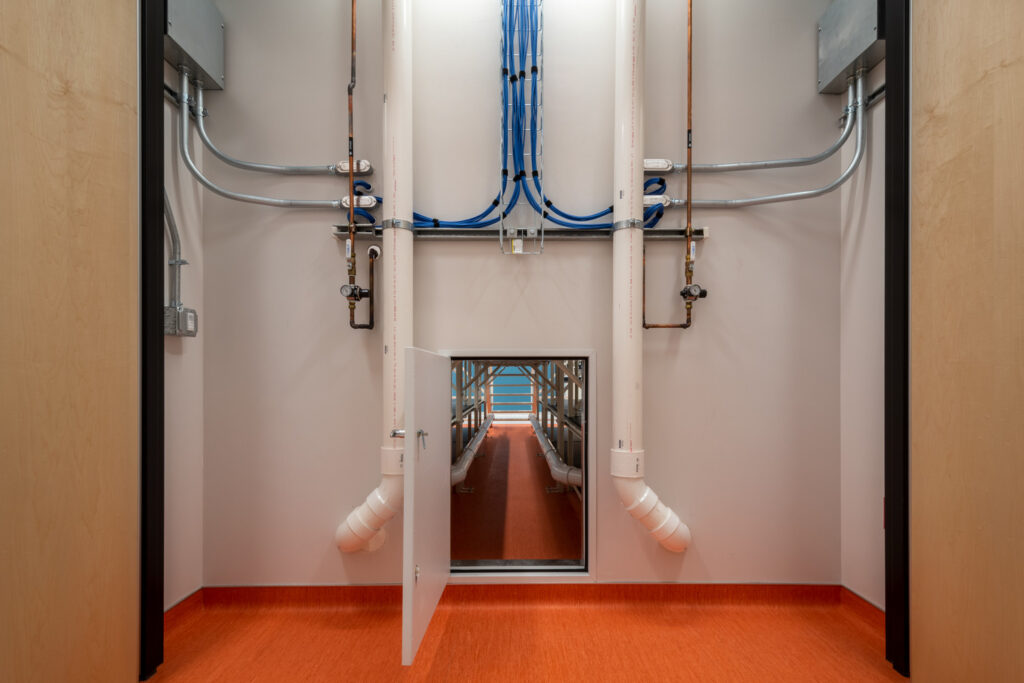

Listen
Low voltage systems begin with “structured cabling”, it is a dedicated practice of straightforward yet systematized cabling configurations and known construction standards. While it is straightforward, it can also be complex. As such, our design engineers and architects first work in tandem with Information Systems (IS), facilities, and leadership personnel to learn all that we can about how you envision the ideal low-voltage system. Not sure you have a low voltage vision? No worries. We can guide you there.
For example, here is a partial list of topics we may consider together:
- Genuinely Listen to your expectations, schedule, budget, and preferred project management style.
- Determine if you have a written Technology Standards Manual and what limitations, or opportunities are covered within. For example, the administration of your Telecommunications Rooms and whether or not other low voltage systems are allowed to be routed back to that room.
- Review whether your IS staff will provide an uninterruptible power supply (UPS) for the network equipment, or if the network equipment will be on a building UPS.
Speaking of your IS staff, we welcome, indeed strongly encourage their participation in this planning right from the start. These visioning sessions are critical to establishing the goal we plan to achieve and the measurable objectives we must meet along the way. Your IS team’s perspective is invaluable to both system planning and installation.

Discover
In this next stage, we assemble the visioning information into an understandable and prioritized index of what’s important to you. Then, we merge that with Strang’s insights and experiences to Discover a roster of project priorities. Here is where levels of need emerge, as do operational requirements.
Also emerging is Strang’s perspective and experience. We build awareness of low voltage potential, proper applications, and the appropriateness of emerging technologies for your project. This pivotal step is where we begin to integrate needed audio/visual, security/access control, surveillance, and internet configurations, to mention a few. These subsets of low-voltage systems combine to optimize the system’s entire overall performance.
Other points of discovery include:
- Are you planning on using VoIP (Voice over Internet Protocol) in office telephones which run on a data network? This means that if the data network goes down, for whatever reason, there will be no telephone service for the amount of time the network is down.
- How many devices will each of your colleagues have at their workspace and will more than one data network connection be required? We can’t forget to determine what devices will be connected to the network directly and what devices will be connected to the network wirelessly.
This stage is also where we discover differences of opinion and priorities among key project stakeholders. But don’t be overly concerned. This can be a healthy awakening that helps the team develop a singular focus. Strang’s project management skills help everyone sort through divergencies and arrive at a united consensus.
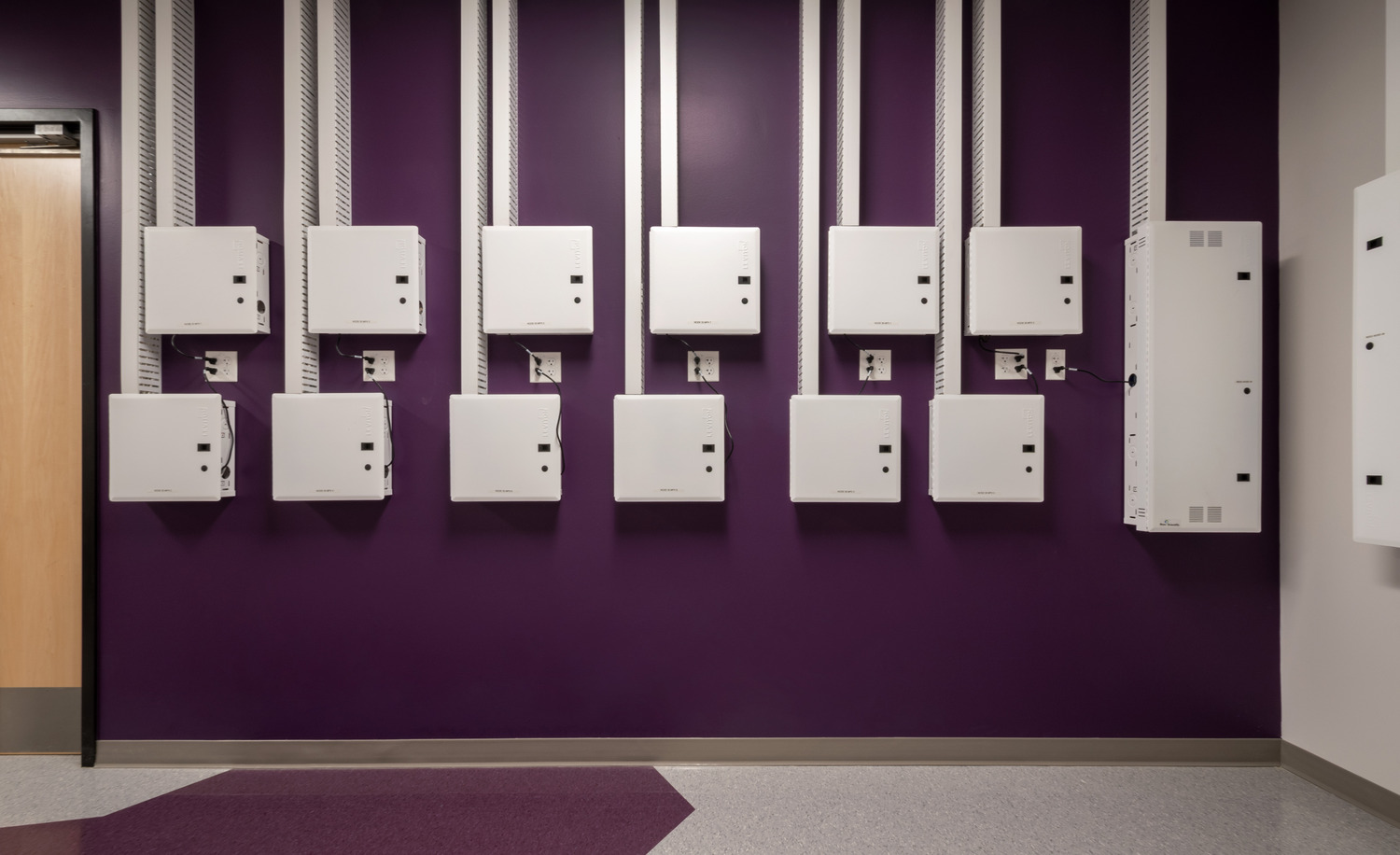
Design
At this point, we begin to construct a schematic design narrative–not just of the low voltage systems themselves, but the built environment your system will exist in. Here we determine adequate and expansion-ready floorplans to house these systems. This includes space for racking, hardware, cabling pathways, dedicated rooms, etc.
Even though most low voltage systems’ components are out of sight, behind walls, above ceilings, and under floors, there is a design element to achieving maximum performance. Low voltage systems can be beautiful . . . just ask our engineers.
While most low voltage systems tend to be hidden, audio/visual systems and digital signage are meant to be seen. However, they must be integrated within a creative and intelligent interior design plan. From your lobby entrance to conference rooms or the space of a mechanical system, designs can range from jaw-droppingly beautiful to strictly functional. These decisions are based on what we learn during the Listen and Discover phases. Consider also these additional Design discoveries:
- Will there be a dedicated room for access control and/or video surveillance systems? Or will the server for each function need to exist within a single telecommunications room?
- Do we require dedicated space to monitor alarms, video incidents, or for an emergency call system?
- What about space for sound masking, HVAC designs, routing cable systems (organized trays or J hooks), or planning for nondisruptive privacy?
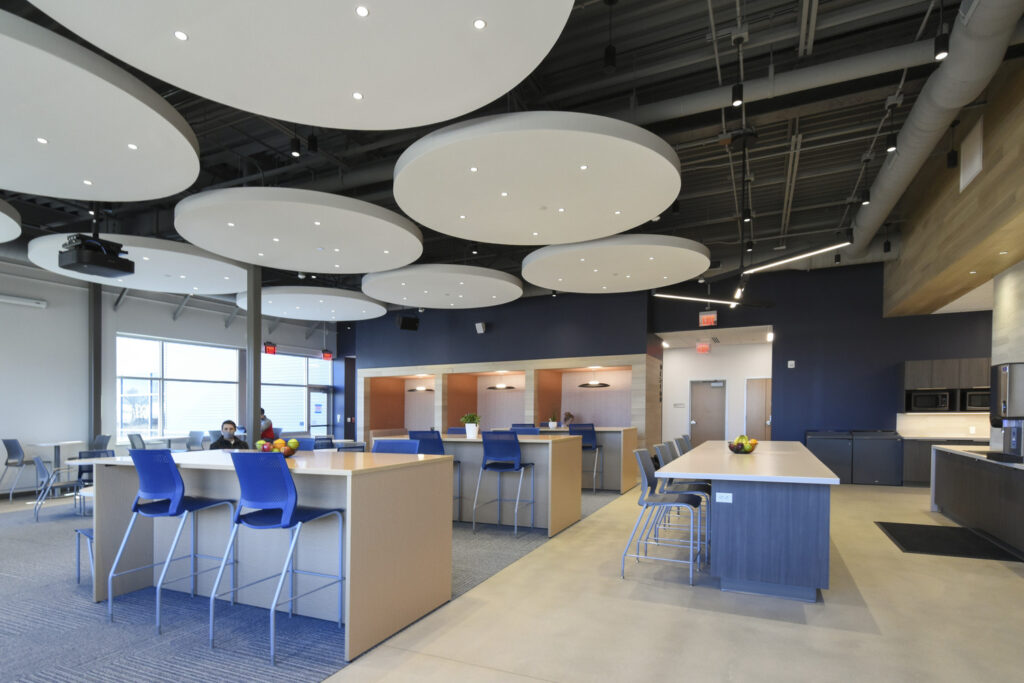
LOOKING FORWARD
Our goal for this story was to simply build awareness and recognition for critical thinking behind the design of low-voltage systems and aligned services. The topic is vast and often complex. As such, we are considering a multiple-part story to address key issues more adequately.
With that being said, is there an element to this topic you would like us to address? Is there a topic you would like us to expand upon? We welcome hearing from you. The ensuing dialogue could be exciting, informational, and insightful.



